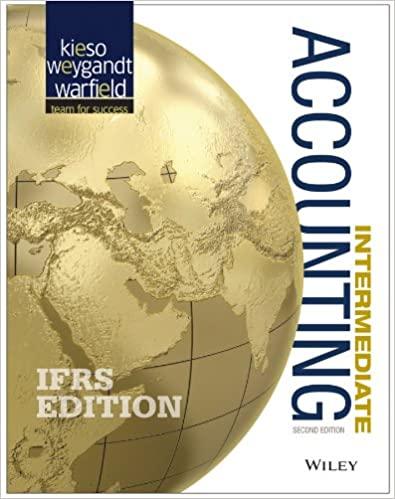Financial Statement Analysis Cases Case 1 Commonwealth Edison Co. The following article about Commonwealth Edison Co. (USA)
Question:
Financial Statement Analysis Cases Case 1 Commonwealth Edison Co.
The following article about Commonwealth Edison Co. (USA) appeared in the Wall Street Journal.
Bond Markets Giant Commonwealth Edison Issue Hits Resale Market With \($70\) Million Left Over NEW YORK—Commonwealth Edison Co.’s slow-selling new 9¼% bonds were tossed onto the resale market at a reduced price with about \($70\) million still available from the \($200\) million offered Thursday, dealers said.
The Chicago utility’s bonds, rated double-A by Moody’s and double-A-minus by Standard &
Poor’s, originally had been priced at 99.803, to yield 9.3% in 5 years. They were marked down yesterday the equivalent of about \($5.50\) for each \($1\),000 face amount, to about 99.25, where their yield jumped to 9.45%.
Instructions
(a) How will the development above affect the accounting for Commonwealth Edison’s bond issue?
(b) Provide several possible explanations for the markdown and the slow sale of Commonwealth Edison’s bonds.
Case 2 Eurotec Consider the following events relating to Eurotec’s long-term debt in a recent year.
1. The company decided on February 1 to refinance €500 million in short-term 7.4% debt to make it longterm 6%.
2. €780 million of long-term zero-coupon bonds with an effective-interest rate of 10.1% matured July 1 and were paid.
3. On October 1, the company issued €250 million in Australian dollars 6.3% bonds at 102 and €95 million in Italian lira 11.4% bonds at 99.
4. The company holds €100 million in perpetual foreign interest payment bonds that were issued in 1989 and presently have a rate of interest of 5.3%. These bonds are called perpetual because they have no stated due date. Instead, at the end of every 10-year period after the bond’s issuance, the bondholders and Eurotec have the option of redeeming the bonds. If either party desires to redeem the bonds, the bonds must be redeemed. If the bonds are not redeemed, a new interest rate is set, based on the then-prevailing interest rate for 10-year bonds. The company does not intend to cause redemption of the bonds but will reclassify this debt to current next year since the bondholders could decide to redeem the bonds.
Instructions
(a) Consider event 1. What are some of the reasons the company may have decided to refinance this short-term debt, besides lowering the interest rate?
(b) What do you think are the benefits to the investor in purchasing zero-coupon bonds, such as those described in event 2? What journal entry would be required to record the payment of these bonds?
If financial statements are prepared each December 31, in which year would the bonds have been included in current liabilities?
(c) Make the journal entry to record the bond issue described in event 3. Note that the bonds were issued on the same day, yet one was issued at a premium and the other at a discount. What are some of the reasons that this may have happened?
(d) What are the benefits to Eurotec in having perpetual bonds as described in event 4? Suppose that in the current year, the bonds are not redeemed and the interest rate is adjusted to 6% from 7.5%. Make all necessary journal entries to record the renewal of the bonds and the change in rate.
Step by Step Answer:

Intermediate Accounting IFRS Edition
ISBN: 9781118443965
2nd Edition
Authors: Donald E. Kieso, Jerry J. Weygandt, Terry D. Warfield





